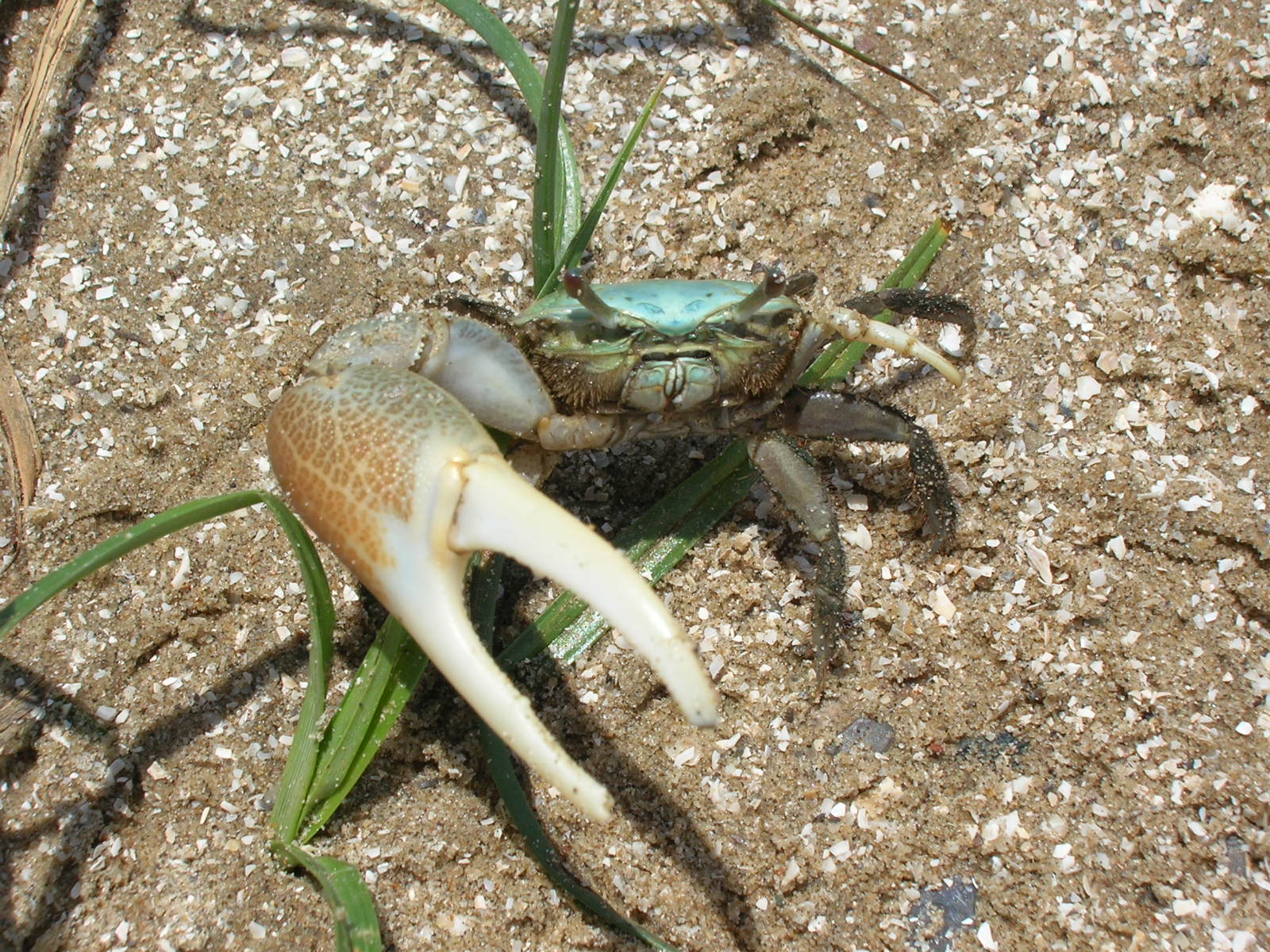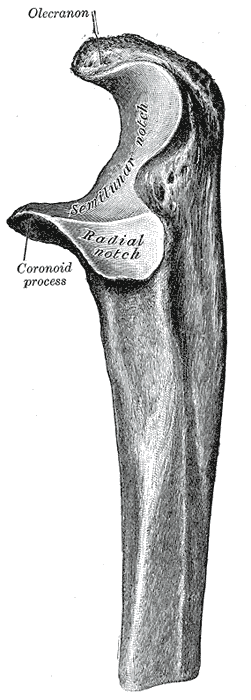|
Poland Syndrome
Poland syndrome is a birth defect characterized by an underdeveloped Pectoralis major, chest muscle and symbrachydactyly, short webbed fingers on one side of the body. There may also be short ribs, less fat, and breast and nipple abnormalities on the same side of the body. Typically, the right side is involved. Those affected generally have normal movement and health. The cause of Poland syndrome is unknown. One theory is that it is due to disruption of blood flow during embryonic development. It is generally not heredity, inherited, and no genes that contribute to the disorder have been identified. Diagnosis of Poland syndrome is based on its symptoms. Often, those with the syndrome remain undiagnosed, and some may not realize they have it until puberty. Treatment of Poland syndrome depends on its severity and may include surgical correction. The syndrome affects about 1 in 20,000 newborns, and males are affected twice as often as females. It is named after English surgeon Si ... [...More Info...] [...Related Items...] OR: [Wikipedia] [Google] [Baidu] |
Dextrocardia
Dextrocardia () is a rare congenital condition in which the apex of the heart is located on the right side of the body, rather than the more typical placement towards the left. There are two main types of dextrocardia: dextrocardia of embryonic arrest (also known as isolated dextrocardia) and dextrocardia ''situs inversus''. Dextrocardia ''situs inversus'' is further divided. Classification Dextrocardia of embryonic arrest In this form of dextrocardia, the heart is simply placed further right in the thorax than is normal. It is commonly associated with severe defects of the heart and related abnormalities including pulmonary hypoplasia. Dextrocardia situs solitus Dextrocardia refers to a heart positioned in the right side of the chest. Situs solitus describes viscera that are in the normal position, with the stomach on the left side. Dextrocardia situs inversus Dextrocardia situs inversus refers to the heart being a mirror image situated on the right side. For all visceral ... [...More Info...] [...Related Items...] OR: [Wikipedia] [Google] [Baidu] |
Simian Crease
In humans, a single transverse palmar crease is a single crease that extends across the palm of the hand, formed by the fusion of the two palmar creases. Although it is found more frequently in persons with several abnormal medical conditions, it is not predictive of any of these conditions since it is also found in persons with no abnormal medical conditions. This crease is estimated to occur in 1.5-3% of the general population, although it is more common in East Asian and Native American populations. Former name Because it resembles the usual condition of non-human simians, it was, in the past, called the simian crease or simian line. These terms have widely fallen out of favor due to their pejorative connotation. Medical significance This crease is found in 45% of people with down syndrome. The presence of a single transverse palmar has been associated with several abnormal medical conditions—that is, it is found at a higher than 1.5% frequency, but in all of these condi ... [...More Info...] [...Related Items...] OR: [Wikipedia] [Google] [Baidu] |
Asymmetry
Asymmetry is the absence of, or a violation of, symmetry (the property of an object being invariant to a transformation, such as reflection). Symmetry is an important property of both physical and abstract systems and it may be displayed in precise terms or in more aesthetic terms. The absence of or violation of symmetry that are either expected or desired can have important consequences for a system. In organisms Due to how cell (biology), cells divide in organisms, asymmetry in organisms is fairly usual in at least one dimension, with Symmetry in biology, biological symmetry also being common in at least one dimension. Louis Pasteur proposed that biological molecules are asymmetric because the cosmic [i.e. physical] forces that preside over their formation are themselves asymmetric. While at his time, and even now, the symmetry of physical processes are highlighted, it is known that there are fundamental physical asymmetries, starting with time. Asymmetry in biology Asy ... [...More Info...] [...Related Items...] OR: [Wikipedia] [Google] [Baidu] |
Ulna
The ulna or ulnar bone (: ulnae or ulnas) is a long bone in the forearm stretching from the elbow to the wrist. It is on the same side of the forearm as the little finger, running parallel to the Radius (bone), radius, the forearm's other long bone. Longer and thinner than the radius, the ulna is considered to be the smaller long bone of the lower arm. The corresponding bone in the Human leg#Structure, lower leg is the fibula. Structure The ulna is a long bone found in the forearm that stretches from the elbow to the wrist, and when in standard anatomical position, is found on the Medial (anatomy), medial side of the forearm. It is broader close to the elbow, and narrows as it approaches the wrist. Close to the elbow, the ulna has a bony Process (anatomy), process, the olecranon process, a hook-like structure that fits into the olecranon fossa of the humerus. This prevents hyperextension and forms a hinge joint with the trochlea of the humerus. There is also a radial notch for ... [...More Info...] [...Related Items...] OR: [Wikipedia] [Google] [Baidu] |
Syndactyly
Syndactyly is a condition wherein two or more digits are fused together. It occurs normally in some mammals, but is an unusual condition in humans. The term is . Classification Syndactyly can be simple or complex. * In simple syndactyly, adjacent fingers or toes are joined by soft tissue. * In complex syndactyly, the bones of adjacent digits are fused. The kangaroo exhibits complex syndactyly. Syndactyly can be complete or incomplete. * In complete syndactyly, the skin is joined all the way to the tip of the involved digits. * In incomplete syndactyly, the skin is only joined part of the distance to the tip of the involved digits. Complex syndactyly occurs as part of a syndrome (such as Apert syndrome) and typically involves more digits than simple syndactyly. Fenestrated syndactyly, also known as acrosyndactyly or terminal syndactyly, means the skin is joined for most of the digit but in a proximal area there are gaps in the syndactyly with normal skin. This type of synda ... [...More Info...] [...Related Items...] OR: [Wikipedia] [Google] [Baidu] |
Radius (bone)
The radius or radial bone (: radii or radiuses) is one of the two large bones of the forearm, the other being the ulna. It extends from the Anatomical terms of location, lateral side of the Elbow-joint, elbow to the thumb side of the wrist and runs parallel to the ulna. The ulna is longer than the radius, but the radius is thicker. The radius is a long bone, Prism (geometry), prism-shaped and slightly curved longitudinally. The radius is part of two joint (anatomy), joints: the elbow and the wrist. At the elbow, it joins with the capitulum of the humerus, and in a separate region, with the ulna at the radial notch. At the wrist, the radius forms a joint with the ulna bone. The corresponding bone in the human leg, lower leg is the tibia. Structure The long narrow medullary cavity is enclosed in a strong wall of compact bone. It is thickest along the interosseous border and thinnest at the extremities, same over the cup-shaped articular surface (fovea) of the head. The tra ... [...More Info...] [...Related Items...] OR: [Wikipedia] [Google] [Baidu] |
Oligodactyly
Oligodactyly () is the presence of fewer than five digits (fingers or toes) on a hand or foot.Medical terms Dictionary . Accessed February 16, 2010 It is quite often incorrectly called ''hypodactyly''; the Greek prefixes hypo- and hyper- are used for continuous scales (e.g. in and ), as opposed to |
Diabetes
Diabetes mellitus, commonly known as diabetes, is a group of common endocrine diseases characterized by sustained high blood sugar levels. Diabetes is due to either the pancreas not producing enough of the hormone insulin, or the cells of the body becoming unresponsive to insulin's effects. Classic symptoms include polydipsia (excessive thirst), polyuria (excessive urination), polyphagia (excessive hunger), weight loss, and blurred vision. If left untreated, the disease can lead to various health complications, including disorders of the cardiovascular system, eye, kidney, and nerves. Diabetes accounts for approximately 4.2 million deaths every year, with an estimated 1.5 million caused by either untreated or poorly treated diabetes. The major types of diabetes are type 1 and type 2. The most common treatment for type 1 is insulin replacement therapy (insulin injections), while anti-diabetic medications (such as metformin and semaglutide) and lifestyle modificatio ... [...More Info...] [...Related Items...] OR: [Wikipedia] [Google] [Baidu] |
Maternal
A mother is the female parent of a child. A woman may be considered a mother by virtue of having given birth, by raising a child who may or may not be her biological offspring, or by supplying her ovum for fertilisation in the case of gestational surrogacy. A biological mother is the female genetic contributor to the creation of the infant, through sexual intercourse or egg donation. A biological mother may have legal obligations to a child not raised by her, such as an obligation of monetary support. An adoptive mother is a female who has become the child's parent through the legal process of adoption. A putative mother is a female whose biological relationship to a child is alleged but has not been established. A stepmother is a non-biological female parent married to a child's preexisting parent, and may form a family unit but generally does not have the legal rights and responsibilities of a parent in relation to the child. A father is the male counterpart of a mother. Wom ... [...More Info...] [...Related Items...] OR: [Wikipedia] [Google] [Baidu] |
Biliary
A bile duct is any of a number of long tube-like structures that carry bile, and is present in most vertebrates. The bile duct is separated into three main parts: the fundus (superior), the body (middle), and the neck (inferior). Bile is required for the digestion of food and is secreted by the liver into passages that carry bile toward the hepatic duct. It joins the cystic duct (carrying bile to and from the gallbladder) to form the common bile duct which then opens into the intestine. Structure The top half of the common bile duct is associated with the liver, while the bottom half of the common bile duct is associated with the pancreas, through which it passes on its way to the intestine. It opens into the part of the intestine called the duodenum via the ampulla of Vater. Segments The biliary tree (see below) is the whole network of various sized ducts branching through the liver. The path is as follows: bile canaliculi → canals of Hering → interlobular bile ducts ... [...More Info...] [...Related Items...] OR: [Wikipedia] [Google] [Baidu] |
Liver
The liver is a major metabolic organ (anatomy), organ exclusively found in vertebrates, which performs many essential biological Function (biology), functions such as detoxification of the organism, and the Protein biosynthesis, synthesis of various proteins and various other Biochemistry, biochemicals necessary for digestion and growth. In humans, it is located in the quadrants and regions of abdomen, right upper quadrant of the abdomen, below the thoracic diaphragm, diaphragm and mostly shielded by the lower right rib cage. Its other metabolic roles include carbohydrate metabolism, the production of a number of hormones, conversion and storage of nutrients such as glucose and glycogen, and the decomposition of red blood cells. Anatomical and medical terminology often use the prefix List of medical roots, suffixes and prefixes#H, ''hepat-'' from ἡπατο-, from the Greek language, Greek word for liver, such as hepatology, and hepatitis The liver is also an accessory digestive ... [...More Info...] [...Related Items...] OR: [Wikipedia] [Google] [Baidu] |



